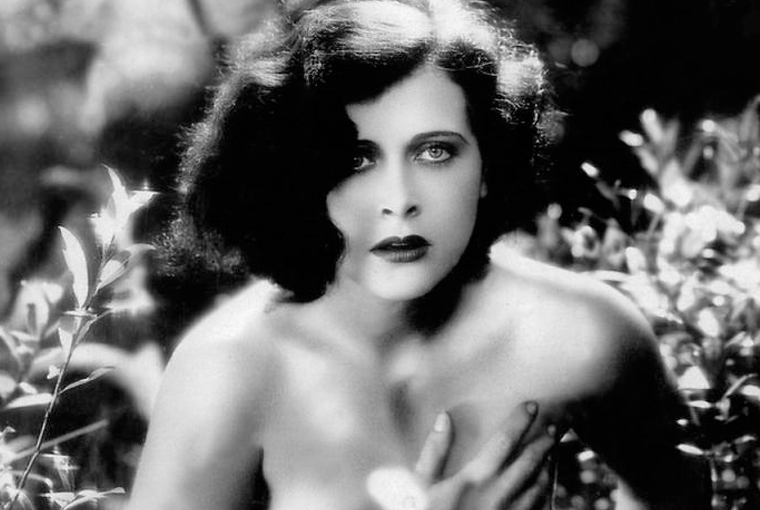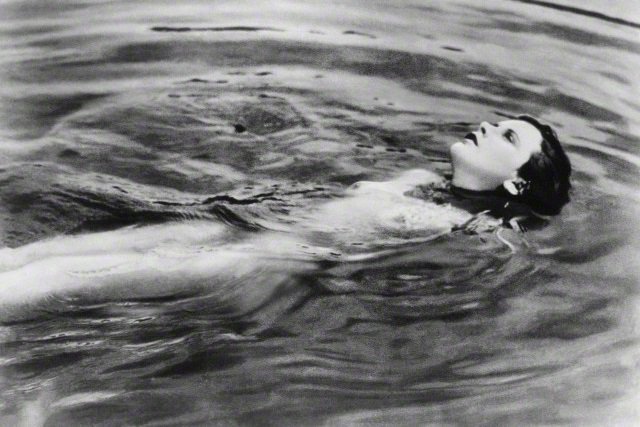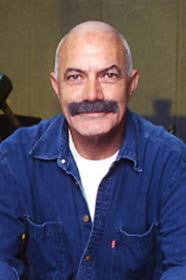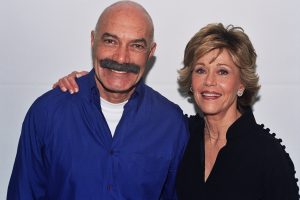Hedy Lamarr in Ecstasy
Pre-opening event (Tuesday August 27) of the 76th Venice Film Fest: Screening of the film-scandal of the 1934 Venice Film Fest: Ecstasy by Gustav Machatý, with Hedy Kiesler (Hedy Lamarr), in the world premiere of a new restored 4K digital copy
The film-scandal of the second Venice Film Fest in 1934, Extase (Ecstasy, 1932) written and directed by Gustav Machatý, with Hedy Kiesler (later known as Hedy Lamarr in Hollywood), is the film selected for the Pre-opening event on Tuesday August 27th of the 76th Venice International Film Festival of the Biennale di Venezia, to be held in the Sala Darsena (Palazzo del Cinema) on the Lido.

The restoration was completed by the Národní filmový archiv (Czech Film Archive) in Prague, thanks to the support of Milada Kučerová and Eduard Kučera and the collaboration of the Film Servis Festival Karlovy Vary. The work was done in the laboratories of L’Immagine Ritrovata in Bologna. The aim of the restoration was to reconstruct a version of the film as close as possible to its original Czech language version, as it has been shown in Venice in 1934. Given no elements of this original release have been preserved, Národní filmový archiv had to resort to other language versions and Czech elements from subsequent releases of the film. Partners contributing to the restoration were British Film Institute, Cinémathèque16, Cinémathèque suisse, CNC, Danish Film Institute, Filmarchiv Austria, Gaumont and Slovak Film Institute.
Extase was the last film made by Czechoslovakian director Gustav Machatý in his homeland, before he emigrated to work in Austria, Italy and finally the U.S. and Germany. The film owes its notoriety to a series of circumstances: the display of the body of the not-yet twenty-year old Hedy Kiesler (before she took the name Hedy Lamarr in Hollywood); the first full nudity in mainstream cinema in the scene that shows her swimming naked; the scandal it provoked at the 2nd Venice International Film Festival in 1934, for this and the first ever scene of sexual intercourse, hinted at in the close-ups of the two lovers’ faces; the useless attempts of her husband, arms dealer Fritz Mandl, who married the actress shortly thereafter, to buy up all the copies in circulation; and a general trend in many countries to censure the film for its overt eroticism, excessive for the time.
On the Lido Extase, screened on August 7th, 1934, won the Coppa Città di Venezia for Best Director, along with the other three Czechoslovakian films screened at that edition of the Venice Film Festival. In the audience referendum, Extase was named best foreign film, and Gustav Machatý best director. The young Michelangelo Antonioni, who had come to the Venice Film Festival as a film critic, wrote: «In the garden of the Excelsior, that night, you could hear the breathing of the enthralled viewers, you could feel the shiver running through the audience».
The sound movie still maintained the structure of the language of silent films and is distinguished by an expressivity enhanced by the skillful editing, both symbolic and allusive. Tragic and fatalistic, Extase was defined in the caption of a poster of the time as “a symphony of love”.

Synopsis
Eva, the beautiful daughter of a landowner, marries an older man, Emil. She soon realizes that her husband has no interest in her femininity. Eva returns to her family home, and requests a separation. In the countryside, Eva meets Adam, who accidentally sees her swimming naked in a lake. Soon the two young people fall in love. Eva becomes Adam’s lover. Just when they are about to run off together, Emil commits suicide, making this union impossible for Eva, who is overwhelmed by guilt. In an undefined future, she raises the child she conceived with Adam, while Adam himself finds redemption in his work.
The Extase affair at the Venice Film Festival (1934). From La Biennale di Venezia Historical Archives of Contemporary Arts (ASAC)
“It was a very lively exposition”, wrote Flavia Paulon, a legendary official of the Venice Film Festival, in her book La dogaressa contestata (1971), a personal account of the years she spent at the Festival. “The presentation of Ecstasy caused a scandal when, through the bushes, the camera caught a glimpse of the beautiful Kiesler’s languid nudity. This film caused such an uproar, such outrage, that even Mussolini demanded to know what was happening on the Lido di Venezia and summoned De Feo [Luciano De Feo, director of the
Istituto per il Cinema Educativo and one of the principal organizers of the Venice Film Festival], who hopped on a plane and took the film to Rome. Sandro De Feo describes what happened as follows: ‘It was rumoured that Mussolini’s concern about passing final judgment himself, was probably just an excuse so that he could enjoy that love scene personally, and it may well be that there was some truth to this gossip (…). De Feo therefore arrived in Rome and went straight to the screening room at Villa Torlonia. Bocchini, the secretary, had warned him that Mussolini was extremely angry. In fact, he walked into the room in a terrible mood. He didn’t say a word until the scene that had provoked the scandal, and at that point he himself was disarmed before all that “ecstasy”. With a nervous tremor in his voice he said: “Well she is quite a beautiful woman!”, and so De Feo returned without further ado to Venice with the reels of the film”.
Hedy Lamarr, diva and scientist
Born in Vienna on November 9th, 1914 (she died in Florida on January 19th, 2000) her name was Hedwig Kiesler and she came from a wealthy Jewish family. She showed a marked propensity for acting even as a child. Discovered by Max Reinhardt, who taught her the fundamentals of acting, before the age of twenty she starred in Ecstasy by Czechoslovakian director Gustav Machatý, the film that would forever brand her as a sex symbol: in one sequence Hedy appeared completely nude, in another in full erotic rapture.
In 1933, Hedy married an arms dealer, Friederich Mandl. In her villa in Vienna, Hedy met people such as Freud and Mussolini. But as the anti-Jewish laws became increasingly harsh, Hedy grew intolerant of Mandl, who sold weapons to the Fascist regimes: she fled to London in 1937, her pockets filled with jewellery. There producer Louis B. Mayer changed her name to Hedy Lamarr (as a tribute to Barbara La Marr, a silent film actress), and launched her in Hollywood as the star of John Cromwell’s Algiers, alongside Charles Boyer. Hedy was an instant hit: audiences and critics alike adored her and her magnificent eyes, framed by her arched eyebrows, would become world-famous. She made many other films during this time, with actors such as Clark Gable and Spencer Tracy. According to Hedy, however, all a girl had to do to look fascinating was “stand still and look stupid”. Anguished by the rise of antisemitism, Hedy was unable to enjoy her success. Her second marriage, in 1939, lasted less than a year and a half.

In the meantime, in the Atlantic Ocean, the German U-Boots were sinking ships loaded with supplies for the European allies. Remembering some information that she had learned from her first husband, Hedy understood that every guidance system based on the use of a single frequency could easily be intercepted and blocked by the enemy. So Hedy imagined a missile guidance system that varied the radio frequency in apparently random fashion. With the help of composer George Antheil, famous for his Ballet Mécanique played by sixteen synchronized player pianos using rolls of perforated paper, she invented a system based on two rolls that contained the same random pattern: placed in the signal transmitter and receiver, they would contain the list of frequencies to use, making the missile practically impossible to intercept. The American government did not take her patent seriously however, and the Frequency Hopping Spread System was quickly forgotten. It would be used twenty years later during the Cuban missile crisis, as the communication system for American ships.
In 1946 Hedy made her last successful film, Samson and Delilah. From that moment forward, she was cast aside in favour of newer faces. In 1947, she divorced from her third husband, whom she had married in 1943. Her last three marriages were equally short-lived. Hedy said: “I must stop marrying men who feel inferior to me. There must be, somewhere, a man who can be my husband without feeling inferior”.
At the age of fifty, Hedy had three children to maintain while cinema was turning its back on her. She began to see a psycho-analyst, and became obsessed with her physical decline. Her relationship with her children grew bitter, and she threw her older son James out of the house after an innocuous argument. During her final decades, she was involved in episodes of kleptomania and in various lawsuits with which she sued for damages. It would not be until the 1990s, when the cellular phone market exploded, that the world began to understand that the system used for Bluetooth, cell-phones and wireless networks was none other than an evolution of the system patented by Hedy. At the age of 84, in 1998, Hedy was awarded the Kaplan medal, the most prestigious Austrian acknowledgment for an inventor. Her comment, upon receiving news of the award, was a laconic: “It’s about time”.
The director Gustav Machatý
This was the first great figure in Czechoslovakian film to rise to international fame. Born in Prague in 1901, Gustav Machatý began to work in cinema at a very young age concurrently with the birth of cinema itself. At the age of twelve, he was the live pianist in movie theatres playing the music for silent films, as was the practice of that time. In 1919, he began to emerge as an actor in comedy sketches based on the American model, for which he often wrote both the subject and the screenplay. That same year, he directed his first film, a comedy. His rise was accompanied by that of diva Anna Ondráková [later starring as Anny Ondra for Hitchcock in Blackmail, 1929]. In 1921 Machatý went to Hollywood for the first time where, over a period of four years, he might have been in contact with Griffith and Von Stroheim (it is said that he was the latter’s assistant for the film Foolish Wives, 1921). Through these contacts, he would have acquired a taste for “genius” and eccentricity. Upon his return, he achieved fame at home with the film adaptation of Tolstoy’s The Kreutzer Sonata (1926).
In 1929, before turning thirty, he expressed his art fully, achieving resounding success with his first “scandalous” film, Erotikon, starring Ita Rina, whom he had discovered. The film earned Machatý a reputation as a bold and refined director, revealing a remarkable skill in the use of editing and lighting, techniques he learned from his time with American and Nordic cinema.
Erotikon forever bound Machatý to the idea of open-minded cinema, and the conviction that no director was as capable as he was of representing female sensuality. With his next film Extase, Machatý made his most famous and mature work. The expert and suggestive use of music and editing in relation to the importance of a natural setting, the famous nude scene with Hedy Kiesler (later Lamarr) in the role of a woman disappointed with married life who abandons herself to the love of another man, brand this film as a manifesto for audacity on screen, and at the same time, a tribute to a Panic and elegiac vision of carnal love, a praise of the harmony between man and nature.
Machatý made his later films abroad, in Austria (Nocturno, 1934) and Italy (Ballerine, 1938), then again the United States (Jealousy, 1945) and finally Germany (Suchkind 312, 1955).
Extase
directed by: Gustav Machatý; production: Elektafilm and Gustav Machatý; story and screenplay: František Horký, Gustav Machatý; cinematography: Jan Stallich; editing: Antonín Zelenka; sound: Josef Zora; set design: Bohumil Heš; music: Giuseppe Becce; Czechoslovakia 1932, black and white, 87 min.
Restored in 4K in 2019 by the Národní filmový archiv in Prague, thanks to the support of Milada Kučerová and Eduard Kučera and in collaboration with the Film Servis Festival Karlovy Vary. Laboratories: L’Immagine Ritrovata.










